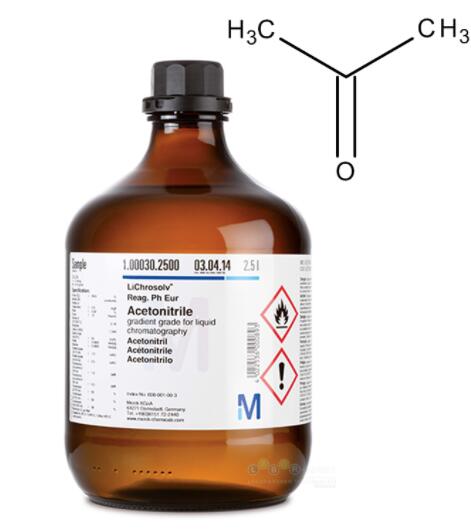What is OTTOFUELII?
Background Information
Otto Fuel II (OFII) was developed by Dr Otto Reitlinger and introduced by the United States Navy in the mid-1960s as a monopropellant, a propellant consisting of a chemical or mixture that can function on its own without the addition of a separate substance. It is amixture of three chemical constituents, propylene glycol dinitrate, dibutyl sebacate, and 2-nitrodiphenylamine, and has been primarily used as a torpedo propellant due to its ability to combust in the absence of oxygen. The development of OFII was significant given that it increased the speed and range of torpedoes, and despite 50 years in operation, it currently remains in use as a premier torpedo propellant.
Uses
OFII is used as a propellant for torpedoes and other weapons
systems. OFII exists as a reddish-orange, oily liquid with a distinct odor and is a mixture of three chemicals, propylene
glycol dinitrate (76%), dibutyl sebacate (22%), and 2-nitrodiphenylamine
(1.5%). The largest component of OFII is
propylene glycol dinitrate, a colorless liquid also known as
1,2-propylene glycol dinitrate, PGDN, or 1,2-propanediol
dinitrate. Propylene glycol dinitrate is a nitrated ester that
constitutes the explosive portion of OFII. OFII’s toxicity is
largely associated with propylene glycol dinitrate.
Dibutyl sebacate, a clear liquid, is added to OFII as
a desensitizing agent to stabilize the mixture. Although
a significant fraction of OFII, dibutyl sebacate is also used in the
production of plastics, including those used for packaging
food, and as a flavor enhancer in foods such as nonalcoholic
beverages, ice creams, candies, and baked goods. Additionally,
it is used as a lubricant in shaving creams. Alternative names for
dibutyl sebacate are decanedioic acid, dibutyl ester, sebacic
acid, and dibutyl decanedioate. The final component of OFII is
2-nitodiphenylamine, a solid that serves as a stabilizer to
control the explosion of propylene glycol dinitrate. It is also
used as a solvent dye. 2-Nitrodiphenylamine is also referred to
as 2-nitrobenzenamine, 2-nitro-N-phenyl, 2-nitro-N-phenylaniline,
and Sudan Yellow 1339.
Mechanism of Toxicity
The mechanism of toxicity for OFII is associated with its major component, propylene glycol dinitrate. Propylene glycol dinitrate is an organic nitrate and therefore shares the vasodilating capacity of therapeutic nitrates, such as nitroglycerin used for treatment of angina pectoris. Organic nitrates cause peripheral vasodilation, decreased ventricular ejection time, relaxation, and a longer period of coronary blood flow.
An early consequence of overexposure to propylene glycol dinitrate (or OFII) is the vasodilation of the cerebral vessels, which is considered the major contributor in the development of the typical trinitrotoluene headache. In cases of more severe overexposure, relaxation of the vascular smooth muscle can cause a decrease in blood pressure followed by a compensatory vasoconstriction. The magnitude of the vasodilating effect has been shown to decrease following repeated exposure to organic nitrates. While the mechanism for organic nitrate tolerance is not understood, possibilities include the depletion of sulfhydryl groups at the receptor sites, reduced availability or activity of the active intermediate S-nitrosothiol, and alterations in the pharmacokinetics leading to decreased nitrate concentrations in vascular tissues. Extreme overexposure to propylene glycol dinitrate can produce toxic levels of methemoglobin, a property shared by many organic and inorganic nitrates and also by aromatic amines, including 2-nitrodiphenylamine. This effect is significant given that methemoglobin is unable to reversibly combine with oxygen and carbon dioxide and causes a shift in the oxygen dissociation curve toward increased oxygen affinity, inhibiting oxygen transfer from the blood to the tissues. The mechanism of dibutyl sebacate toxicity is unknown.
Environmental Fate
OFII enters the environment as its three sepbarate chemical components, with each partitioning into the environment at rates dependent on their individual chemical and physical properties. OFII has a relatively low vapor pressure indicating that little evaporation occurs. OFII is mainly released in water in waste streams from facilities involved in production or torpedo rework operations. Limited data on the environmental fate of OFII indicate that propylene glycol dinitrate is removed from the water by volatilization, and neither 2-nitrodiphenylamine nor dibutyl sebacate is volatile or soluble enough for the partitioning to air or water to be significant fate processes.
2-Nitrodiphenylamine tends to precipitate and has been detected in river sediments receiving wastewater runoff; this is considered its most likely fate. Data on biodegradation of propylene glycol dinitrate and 2-nitrodiphenylamine are mixed. Some studies indicate that these compounds may biodegrade while other experiments indicate that these components are largely recalcitrant to degradation. Dibutyl sebacate is rapidly biodegraded by a variety of microorganisms.
Propylene glycol dinitrate and 2-nitrodiphenylamine are photolyzed and photooxidized in water and it is likely that these substances are similarly broken down in the air.
A bioaccumulation factor has been estimated only for 2-nitrodiphenylamine and indicates that it does not bioconcentrate in aquatic organisms or biomagnify in the food chain. More information on the bioconcentration potential of these chemicals, including experimental data, is necessary to assess the biomagnification risk in the food chain.


